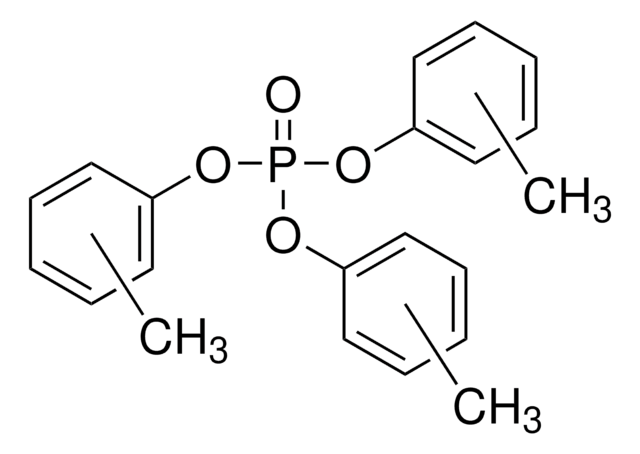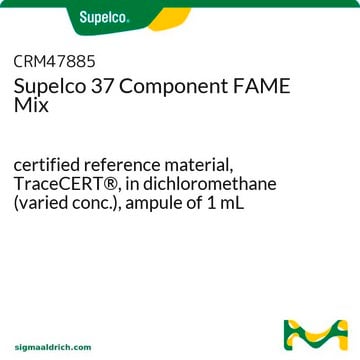442829
Triphenyl phosphate
analytical standard
About This Item
Productos recomendados
grado
analytical standard
presión de vapor
1.3 mmHg ( 200 °C)
CofA
current certificate can be downloaded
envase
ampule of 1000 mg
técnicas
HPLC: suitable
gas chromatography (GC): suitable
bp
244 °C/10 mmHg (lit.)
mp
48-50 °C (lit.)
solubilidad
H2O: 0.0019 g/L at 20 °C
aplicaciones
environmental
Formato
neat
temp. de almacenamiento
2-30°C
cadena SMILES
O=P(Oc1ccccc1)(Oc2ccccc2)Oc3ccccc3
InChI
1S/C18H15O4P/c19-23(20-16-10-4-1-5-11-16,21-17-12-6-2-7-13-17)22-18-14-8-3-9-15-18/h1-15H
Clave InChI
XZZNDPSIHUTMOC-UHFFFAOYSA-N
¿Está buscando productos similares? Visita Guía de comparación de productos
Aplicación
Palabra de señalización
Warning
Frases de peligro
Consejos de prudencia
Clasificaciones de peligro
Aquatic Acute 1 - Aquatic Chronic 1
Código de clase de almacenamiento
11 - Combustible Solids
Clase de riesgo para el agua (WGK)
WGK 2
Punto de inflamabilidad (°F)
428.0 °F - closed cup
Punto de inflamabilidad (°C)
220 °C - closed cup
Equipo de protección personal
Eyeshields, Gloves
Elija entre una de las versiones más recientes:
¿Ya tiene este producto?
Encuentre la documentación para los productos que ha comprado recientemente en la Biblioteca de documentos.
Los clientes también vieron
Nuestro equipo de científicos tiene experiencia en todas las áreas de investigación: Ciencias de la vida, Ciencia de los materiales, Síntesis química, Cromatografía, Analítica y muchas otras.
Póngase en contacto con el Servicio técnico








